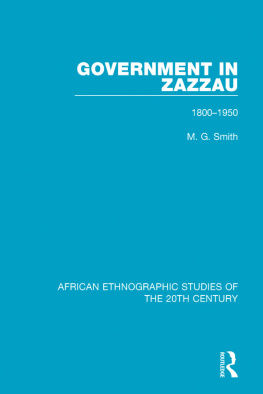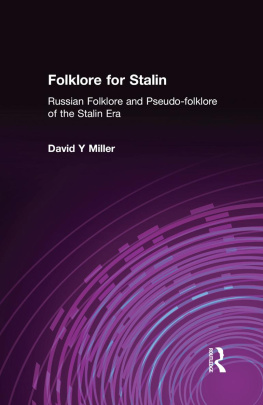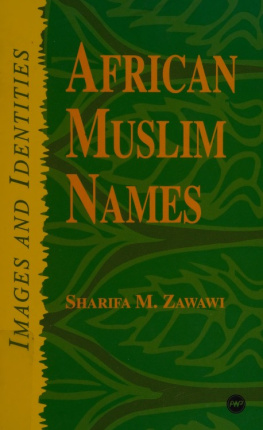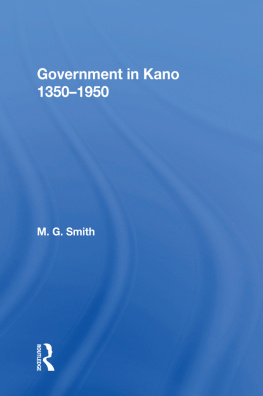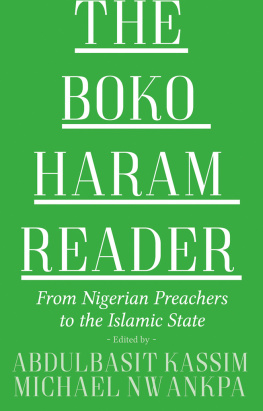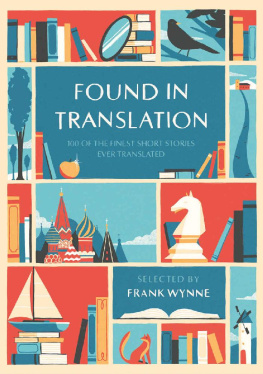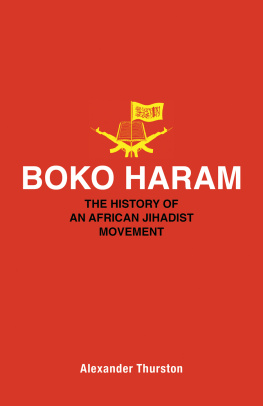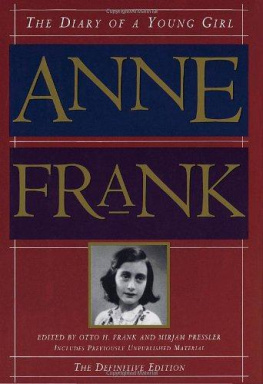First Published in 1969 by
FRANK CASS AND COMPANY LIMITED
Published 2013 by Routledge
2 Park Square, Milton Park, Abingdon, Oxon OX14 4RN
711 Third Avenue, New York, NY, 10017, USA
Routledge is an imprint of the Taylor & Francis Group, an infoma business
Copyright 1969 Neil Skinner
ISBN 13: 978-0-714-61718-3 (hbk)
Neil Skinner probably invited me to contribute this Foreword to his translation of Frank Edgars Hausa folk stories as a gesture of friendship and because he knows my admiration for Edgars work and for the Hausa people. In accepting, I am struck by the strange indirect association of these two men which dates in my experience beyond 1958 when Neil Skinner showed me a mass of Edgars unpublished writings which he had purchased while on leave in Britain the year before for the Northern Region Literature Agency (NORLA) from the estate of Frank Edgars widow. Assisted by a Hausa Arabist of the NORLA staff at Tudun Gaskiya, Zaria, I spent an exciting week with these papers; all clearly handwritten on foolscap, they filled three shelves, each five feet long. To list them I catalogued these papers by their titles, and grouped them in provisional categories by topic or region. If Edgars published corpus is in fact the most extensive collection of African folklore yet issued by a single author, these and other works published by Edgar in his lifetime represent merely a portion of his total literary output, little of which was written in English. Surely among the many scholarly officials who have devoted their lives to the study of Northern Nigeria, Edgar can have few peers as a field collector of folklore and tradition.
In 1963 when Neil Skinner was teaching Hausa at the University of California, Los Angeles, Professor William Bascom of Berkeley asked him to translate the three volumes of Tatsuniyoyi Na Hausa, Edgars major work, thereby making it available to scholars unfamiliar with Hausa. Without thought of possible publication, Neil Skinner agreed and returned to New Zealand with a photocopy of Edgars text, long out of print. For the next three years he worked at the translation of Volumes I and II of the Tatsuniyoyi, whenever he could. Only then and with some urging did he contemplate the prospect of publication. To translate a work of such heterogeneity and character is no mean feat; and to undertake this task as an end in itself without ulterior purposes illustrates remarkable devotion; but perhaps in the wearier stretches the translator recalled the bulk of Edgars work, unpublished and perhaps prepared without thought of publication. It is odd, the indirect association of these two men, spanning half a century, both former Administrative Officers in Northern Nigeria, both talented linguists, both steeped in the lore and language of the North, both undertaking major literary tasks for their own sake, the older man as collector, the younger as translator. It is odd too that the man who finally translated Edgars compendium of Hausa folklore should earlier have rescued the greater part of Edgars remarkable work from loss or destruction by purchasing it, on his own initiative, for Northern Nigeria where this treasure rightly belongs; and it is quite fitting that as the former Director of NORLA, Neil Skinner should have volunteered for this strenuous task of translation, one commensurate perhaps with Edgars initial compilation.
Edgars published collection of Hausa folklore was made primarily in Sokoto Province at the direction of Major John Alder Burdon, the first Resident of Sokoto, who in 1910 gave Edgar some Hausa texts written in the Ajemic script for transliteration into Roman characters as reading matter of real use to Hausa students, that is, to Europeans who wished to learn Hausa. Together with some extracts from the Maliki Law book and other texts that he had collected himself, Edgar prepared the first volume of the Tatsuniyoyi for publication in 1911. The two later volumes contained materials he collected himself.
Burdon had two major interests in directing Edgar to prepare a collection of Hausa folk tales and texts for publication: firstly, to provide British Administrative Officers with suitable materials for Hausa language study, and secondly to increase their knowledge of Hausa society and culture by presenting these folk tales and traditions. Both interests reflect the pattern of Indirect Rule by which the British sought to administer the large Hausa-Fulani Emirates through their traditional rulers and institutions. Such administration required British officials to have a sound knowledge of the native language, history and culture. With this end in view, officials strove to collect folk tales and historical traditions, proverbs, riddles, statements of native custom and belief, and manuscripts on religious, legal and historical subjects from Hausa and Bornu. Besides Burdon and Edgar, H. R. Palmer, E. J. Arnett, A. J. N. Tremearne, R. S. Rattray, J. R. Patterson and others undertook such enquiries in Hausaland and in Bornu. Thus it is to Lugards system of Indirect Rule that we owe the relative abundance and high quality of the documents on the history and customs of these Central Sudanic Emirates, their languages and folklore, compiled by Administrative Officers during the first decades of this century. By comparison with other African regions of similar size, this official contribution to the study of Hausa and Kanuri culture and history in Northern Nigeria is outstanding alike in its depth, quality, variety and volume. In this stimulating milieu, Frank Edgar compiled his enormous corpus of Hausa folk literature.
By 1913 Edgar had published his Grammar of the Gbari Language with attached Dictionary, together with the three volumes of Tatsuniyoyi Na Hausa. Thereafter he published a Hausa selection from the Thousand and One Nights in Roman script. His unpublished manuscripts now at the Regional Archives in Kaduna, Northern Nigeria, reveal the range of his interests and efforts. These scripts include, besides a monumental Hausa-English Dictionary, some poems in Ajemic and Roman script, a store of proverbs, riddles and similar word-plays, numerous folk tales and historical texts on Bornu, Bauchi, Zaria, Katsina, Biu, Jukun, Potiskum, Fika, Kano, Gobir, Kebbi and Sokoto. In addition there are many old texts on legal, political, theological and historical subjects in Arabic, Hausa Ajemic and Roman Hausa versions. Apparently most of these materials were collected after the publication of the Tatsuniyoyi; and perhaps the greater portion consists of historical texts with varying character and range, from terse king lists of local states to extensive accounts of particular incidents and personalities. How many of these scripts were included in the Tatsuniyoyi I cannot say.
The Hausa whose folklore Edgar recorded so industriously are the largest ethnic group in Northern Nigeria and number many millions. Settled in the north-western quarter of that territory, for centuries Hausa have been open to influences from North Africa and from the Middle East as well as from other Central Sudanic states. For centuries also Hausa have traded eastwards to Bornu and west to Gao and the Niger Bend, north to Ghadames and Ghat, southwards to Yoruba and Nupe. Settled on the high fertile savannahs that stretch north to the sahil below the desert, Hausa were simultaneously enriched by trade and exposed to military and political domination for much of their history. Of foreign influences that bore upon them, medieval Islam was both the most complex and important. Then, after centuries of religious syncretism, the traditional Hausa chiefdoms, nominally Muslim but still attached to heathen idioms, were challenged and subdued by a movement of militant Islamic reform led by Shehu dan Fodio, a local Fulani cleric; between 1804 and 1810 the region experienced a major upheaval as the Shehu and his followers, mainly Fulani, overpowered the various Hausa states and established their theocratic regime. Since then most Hausa chiefdoms have had Fulani rulers who claim authority and descent from the Shehus lieutenants; and despite the British occupation of 1900 to 1903 under Lugard, the Fulani have retained their dominance until and since 1960, when Hausaland passed from British rule as part of the independent Nigerian Federation.


